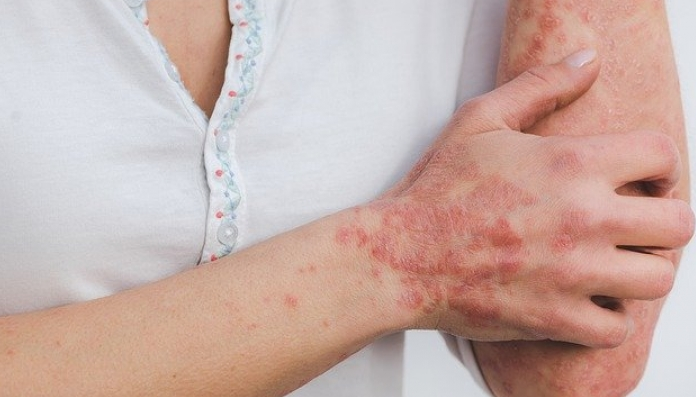When you receive a diagnosis of psoriasis, you wonder how it will affect your life, like what happens as your illness progresses. It is normal to feel anxious over this news, but there are ways to manage symptoms even though there is no cure for psoriasis. However, finding the proper treatment depends on a few different factors. This list of tips helps you through your journey with psoriasis.
Psoriasis in A Nutshell
Psoriasis is a chronic condition causing patches of dry, itchy skin called plaques. When these plaques are not taken care of, they may crack and bleed. Consequently, the drier your skin is, the more likely it will split, causing open wounds on your skin. Unfortunately, these cracks leave you vulnerable to infections.
Psoriasis tends to go through phases of flare-ups and remission. There are treatments available to manage your symptoms and live better with psoriasis. If you have new red patches of itchy skin, it can be psoriasis.
Symptoms To Lookout For
Symptoms of psoriasis vary from person to person. Therefore, patches of psoriasis range from a few spots that look like dandruff to large areas of dryness. Your back, elbows, legs, scalp, feet, palms and face are the most commonly targetted areas where these patches occur. Other symptoms of psoriasis are small scaly spots, dry patches of skin that bleed, swollen joint pain and areas of skin that itch and burn.
Along with these symptoms, it is important to remember that psoriasis goes through cycles, such as flaring up for a few weeks and then going into remission. Nonetheless, people who have symptoms affecting their daily life should speak with their physician.
Types Of Psoriasis
There are different types of psoriasis, which affect individuals in different ways. Some forms of psoriasis only cause small outbreaks that are easily dealt with, while other types cause a more severe reaction. Here is a list of the different kinds of psoriasis:
- Plaque psoriasis is the most common form that causes dry, red lesions covered by silvery scales. The plaques might itch and cause tenderness. The area affected might be small or cover a significant portion of the skin. The usual spot for these patches to form is on the scalp, lower back, elbows and knees.
- Nail psoriasis causes your toenails and fingernails to pit, discolor and grow abnormally. This causes the nail to loosen and separate from the nail bed. In severe cases, the nail can crumble and fall away.
- Guttate psoriasis mainly affects children and young adults. This type is caused by bacterial infections such as strep throat and forms lesions that look like dots on the arm, trunk or legs.
- Inverse psoriasis primarily affects skin folds in your bottom, breasts and groin. It is triggered by fungal infections, causing smooth red patches of skin that get worse with friction from movement.
- Pustular psoriasis is a rare form of psoriasis characterized by pus-filled lesions occurring in widespread patches. They also form in smaller patches on the soles of feet and the palms of hands.
- Erythrodermic psoriasis is the least common form of psoriasis. This type of psoriasis covers the entire body with a red, peeling rash. This rash causes great discomfort since it intensely burns and itches.
- Psoriatic arthritis causes the joints to swell and become painful. Most of the time, the symptoms occurring in the joint are the first signs of an issue. These symptoms range from mild to severe and can affect almost any joint. In the worst case, it causes stiffness, progression or permanent joint damage.
If you suspect your symptoms point to psoriasis, see your doctor immediately.
Causes Contributing To Illness
Psoriasis is said to be an immune system issue that causes the skin to grow abnormally. In the most common type of psoriasis, this rapid turnover of cells results in scales and red patches. However, what causes the immune system to defect isn’t clear. Instead, researchers think genetics and environmental factors play a role.
Psoriasis is a chronic condition that requires long-term treatments because there is no cure. The type of psoriasis and other factors determines the disease’s severity and other symptoms like how many lesions and whether or not the person has any other medical conditions. But remember, there are treatments available no matter how bad your symptoms get.


















